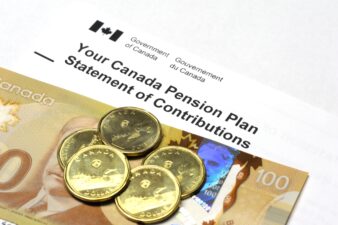Right now could be a once-in-a-decade opportunity to get in on undervalued socks. But that doesn’t help much if you’re drowning in debt. And let me be clear: debt comes first. No matter what you want to do, investors shouldn’t be using more debt to invest. That’s a surefire way to make losses.
Today, we’re going to discuss how to reduce your debt through the snowball method and turn that plan into wealth. Here’s how.
The snowball method
The snowball method is an effective strategy for debt reduction. It focuses on paying off the smallest debts first while maintaining minimum payments on larger debts. In fact, a study by the Harvard Business Review found that individuals using the snowball method are more likely to stick with their debt-repayment plan and successfully pay off their debts. This is because the psychological boost of quick wins (paying off small debts) can provide motivation to tackle larger debts.
First, write down all your debts, including credit cards, loans, and any other obligations. Order them from the smallest balance to the largest. From there, allocate as much money as possible to the smallest debt while making minimum payments on the rest. Then, once the smallest debt is paid off, move to the next smallest, adding the amount you were paying on the first debt to the next. Continue this process until all debts are paid off.
Turn it into wealth
Once your debts are paid off, the next step is to invest your savings wisely. Start with a Tax-Free Savings Account (TFSA) and Registered Retirement Savings Plan (RRSP). Contributions to a TFSA grow tax-free, and withdrawals are also tax-free. This makes it an excellent vehicle for long-term investments. Meanwhile, contributions to an RRSP are tax-deductible, and the investments grow tax-free until withdrawal. This is beneficial for long-term retirement savings.
You’ll then want a diversified mix of assets. For instance, consider exchange-traded funds (ETFs), dividend stocks, real estate investment trusts (REITs) and high-interest savings accounts (HISA). ETFs offer diversification at a low cost. Consider ETFs that track major indices like the S&P/TSX Composite Index, which includes a broad range of Canadian stocks. Investing in dividend-paying stocks can provide a steady income stream. Look for Canadian companies with a strong history of paying and increasing dividends, such as the Big Five banks.
REITs allow you to invest in real estate without the need to buy property directly. They provide exposure to the real estate market and often pay attractive dividends. For short-term savings or an emergency fund, HISAs offer a safe place to store your money while earning interest.
Where to put it
Now, this is where it depends on you as an investor. For aggressive or young investors, consider 80% equities, 10% REITs, and 10% HISAs. Balanced or middle-aged investors may want 60% equities, 20% REITs, 10% bonds, and 10% HISAs. Finally, Conservative investors near retirement may want 40% equities, 30% REITs, 20% bonds, and 10% HISAs.
Let’s say you’re a middle-aged investor. In this case, you might want to consider investing in Royal Bank of Canada (TSX:RY), the largest stock on the TSX today. Furthermore, it provides dividends that are likely to keep going long term, not to mention the growth that will come from its acquisition of HSBC Canada.
For an ETF, consider Vanguard Growth ETF Portfolio (TSX:VGRO), which offers a diversified portfolio with an equity allocation of around 80%. It is perfect for long-term growth and a balanced risk profile.
As for a REIT, I’ve always liked Granite REIT (TSX:GRT.UN). Granite focuses on industrial and logistics properties. Granite has benefited from the growth of e-commerce and the need for logistics and distribution centres, delivering strong returns. Plus, it offers a whopping 5% dividend yield.
Bottom line
Investors can move away from debt and towards high savings.








